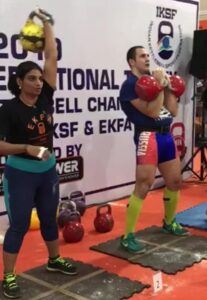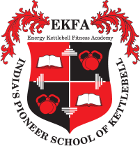
The narrative review on testing and training considerations for the snatch aims to explore the importance of kettlebell testing and training methodologies.
It covers various phases of periodization and how these phases progress towards the in-season. The article delves into needs analysis, focusing on physiological aspects and injury epidemiology, while emphasizing reverse linear periodization to elevate work capacity leading up to the game period.
Whether training follows a linear or reverse approach, the review underscores that a periodized training program is essential for optimizing performance and minimizing injuries.
By digging deeper, the article highlights the critical role of strength and its conversion into speed-strength, strength-speed, or power, all of which are driven by specific training goals. Despite the scarcity of original research, this review draws insights from authoritative sources such as NSCA journals and books.
This study is aimed to analyze and understand the testing protocols and training considerations for kettlebell sports. The focal point of this article is kettlebell snatch. Although the popularity of kettlebells is increasing, fewer facts are known about kettlebell testing protocols and training methodologies. The sport consists of three main lifts-the snatch, jerk and long cycle. A kettlebell snatch involves continuously swinging the kettlebell between the legs by extending the hips, knees, and ankles and using the momentum to take the kettlebell overhead. It is generally performed fo multiple repetitions with only one hand change. It is performed in a biathlon or as a standalone event in Girevoy competitions. The long cycle consists of 10 minutes of clean & jerk, where the bells are cleaned from knee level to chest and then jerked overhead. It can be done with one or two kettlebells. Jerk is performed by grasping two kettlebells in each hand, swinging to the rack position at chest level, and then jerking above the head. A judge. determines if the repetitions are performed correctly and allocates a point accordingly. Kettlebell lifting is a highly technical sport that involves the technicality of snatch, clean, and jerk. For a person to compete at the national/international level, strength and aerobic capacity with explosiveness are imperative. To improve performance, it is prudent to focus on complex training. an essential aspect of post-activation potentiation. Needs analysis based on biomechanics and injury epidemiology is discussed in this article. Individual athlete assessment is necessary. Mobility must be prioritised to prevent injury, as kettlebell moves are highly ballistic.
We recommend that you work with a Fitness coach for a minimum of one year. This will ensure you build a trusting relationship and have time to work through any other inner blocks that are holding you back. Before we start the session, we identify barriers and set challenging goals. You will then go through the following steps with your fitness coach. It’s a 3-step process before we set goals and start achieving them. Remember it’s not just fitness, it’s the shift in patterns of your thinking about fitness or anything similar. We will identify step by step what are things stopping you from achieving your goals.
